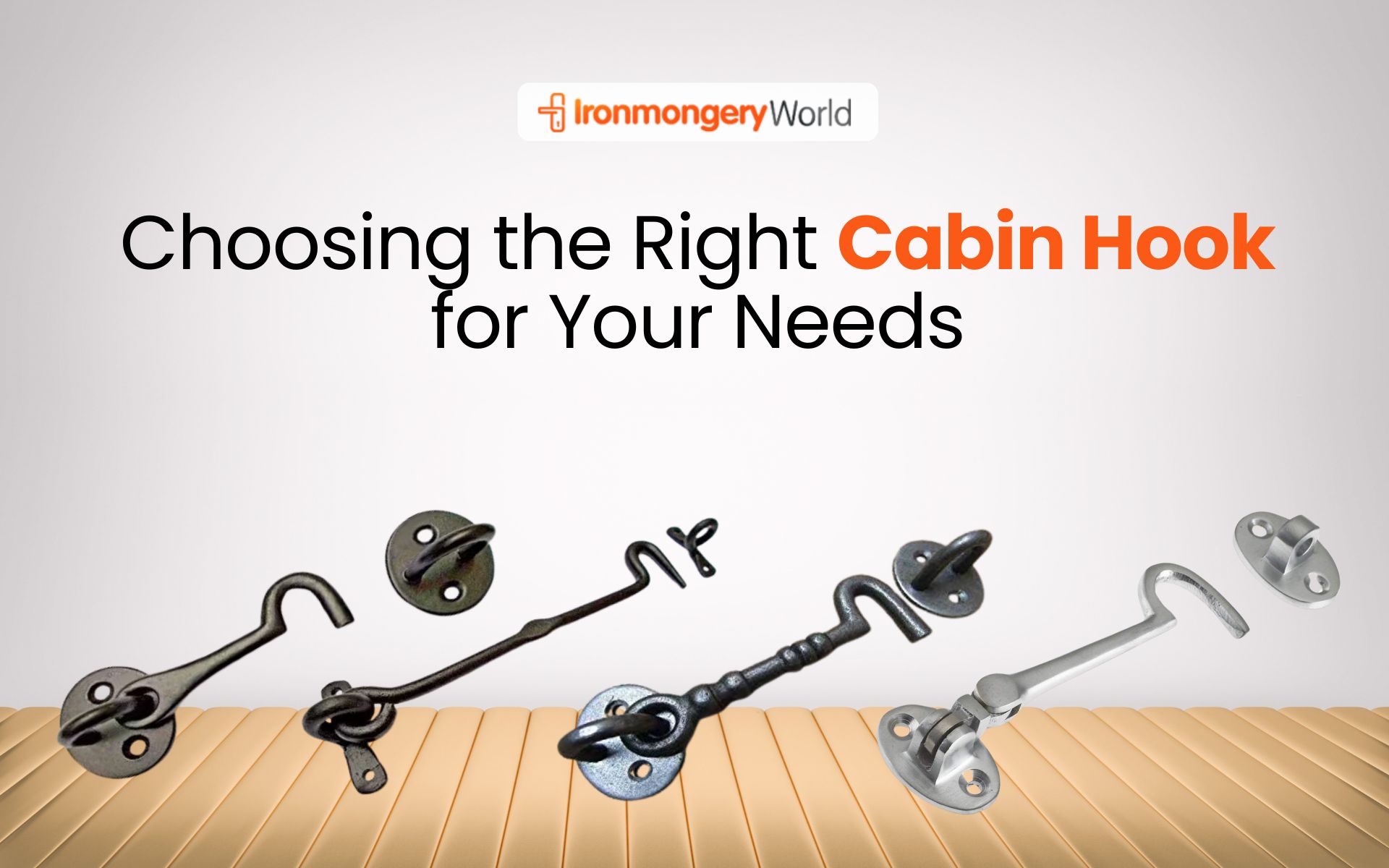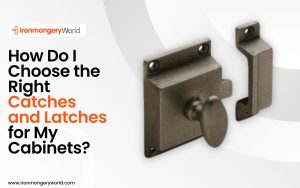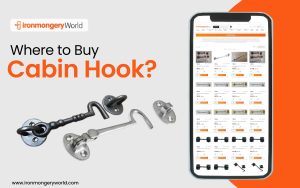Cabin hooks are helpful for many things in our daily lives and are frequently disregarded despite their importance. These little but powerful hardware components are crucial for preserving functionality and security, holding windows open and locking doors and gates. However, choosing the best gate hook for your needs cannot be very clear when so many possibilities are available. Do not be alarmed! In this extensive guide, we’ll go deep into cabin hooks, covering various kinds, materials, and installation techniques. So you can choose the ideal hook lock for the door.
Comprehending Cabin Hooks for Your Home
1. Types of Cabin Hooks: Several varieties of cabin hooks are made to satisfy particular requirements and tastes. Typical varieties include some of the following:
- Straight Cabin Hooks: Suitable for general-purpose applications, these conventional cabin hooks have a straight, uncomplicated form. Silent cabin hooks feature rubber buffers or other noise-reducing devices, making them perfect for spaces like bedrooms or libraries where noise reduction is crucial.
- Safety Cabin Hooks: Suitable for gates or doors in high-traffic areas, these hooks have extra safety features, like a locking mechanism, to prevent inadvertent opening.
- Decorative Cabin Hooks: Decorative cabin hooks, which come in various styles and finishes to match your decor, provide both style and usefulness if aesthetics are important to you.
- Material Matters: A cabin hook’s material significantly impacts its strength, functionality, and appearance.
2. Dimensions and Payload:
Ensure the cabin hook you choose fits your demands by considering its size and load capability. To avoid strain and probable failure, the hook’s load capacity should be greater than the object’s weight, and its size should be proportionate to the object you plan to secure. Ensure you refer to the manufacturer’s specs for details on load capacity and size.
3. Installation-Related Considerations:
Your cabin hook’s security and operation depend on a proper installation. Before installation, take into account the following:
- Mounting Position: Select a spot that will work best for mounting the cabin hook, ensuring it has enough accessibility and clearance.
- Tools and Hardware: Depending on the type of cabin hook and mounting surface, you may require particular tools and hardware for installation. Make sure you have everything you need before you begin the installation procedure.
- Surface Reading: Before proceeding, ensure the mounting surface is clean, level, and free of obstacles.
- Observe the directions: The manufacturer’s installation instructions should always be followed, including any advice on how to drill pilot holes, use anchors, or apply sealants.
4. Value for Money and Budget:
While keeping a tight budget is vital when choosing a cabin hook, value for money should take precedence over initial cost. A sturdy, high-quality cabin hook may initially cost more, but requiring fewer replacements or repairs over time can save you money. When considering the total worth of a cabin hook, consider elements like the brand’s material, style, features, and reputation.
5. Maintenance and Care:
After installation, appropriate maintenance and care can increase the cabin hook’s lifespan and functionality. Maintenance tasks can include the following, depending on the material and finish:
- Regular Cleaning: Use a moist cloth to wipe the cabin hook down and remove dust, grime, or debris.
- Lubrication: Lubricate moving parts with silicone spray or WD-40 to guarantee smooth functioning.
- Rust Prevention: Consider using a rust-resistant finish or protective coating to prevent corrosion and rust from forming on metal cabin hooks.
- Inspection: Look for wear and tear on the cabin hook regularly, such as loose screws, bent hooks, and surface corrosion. Deal with any problems immediately to stop more harm or malfunction.
6. Environmental Factors to Be Considered
The setting where a cabin hook will be installed is another important factor to consider. Various environmental factors can impact the effectiveness and longevity of the cabin hook. The following environmental factors should be remembered:
- Use: Outdoor vs. Indoor: If the cabin hook is mounted outside, it will be subjected to more extreme weather conditions, including sunlight, precipitation, and changes in temperature. In such circumstances, use materials with better corrosion resistance and longevity, such as brass or stainless steel.
- High Humidity environments: Moisture can hasten the growth of rust and corrosion in high-humidity environments, such as bathrooms and coastal areas. To guard against humidity damage, select a finished or coated cabin hook.
- Severe Temperatures: Cabin hooks may expand or contract, impacting their effectiveness in areas with severe temperatures, such as the desert or the Arctic. Consider finishes and materials that can tolerate temperature changes without losing usefulness.
- Chemical Exposure: If the cabin hook will be in contact with harsh cleaning agents or chemicals, choose a material that is resistant to corrosion and chemical damage, such as stainless steel or certain polymers.
- Features of Security: To stop unwanted access or tampering, you might consider using cabin hooks with extra security features, depending on your security requirements. Among the security elements to search for are:
7. Warranty and Brand Reputation
Take into account the manufacturer’s or brand’s reputation while choosing a cabin hook. Select credible brands that are recognised for manufacturing dependable, high-quality hardware products. Furthermore, find out if the cabin hook has a warranty or guarantee against material or workmanship flaws. A guarantee gives you additional comfort and peace of mind because it shows that the manufacturer supports the product’s quality and durability.
8. Client Testimonials and Suggestions
Before deciding on a cabin hook, spend some time reading consumer opinions and suggestions. Other consumers’ experiences and opinions can offer insightful information on the product’s functionality, robustness, and dependability. To be sure the gate hook fits your unique demands, read evaluations from consumers with comparable applications or wants.
Final Thoughts Careful evaluation of a number of aspects, such as type, material, size, installation requirements, budget, and environmental considerations, is necessary when choosing the best cabin hook for your needs. You may select a hook lock for the door that not only satisfies your functional demands. It also provides durability, security, and peace of mind by knowing your individual requirements and weighing the available possibilities based on these criteria.


